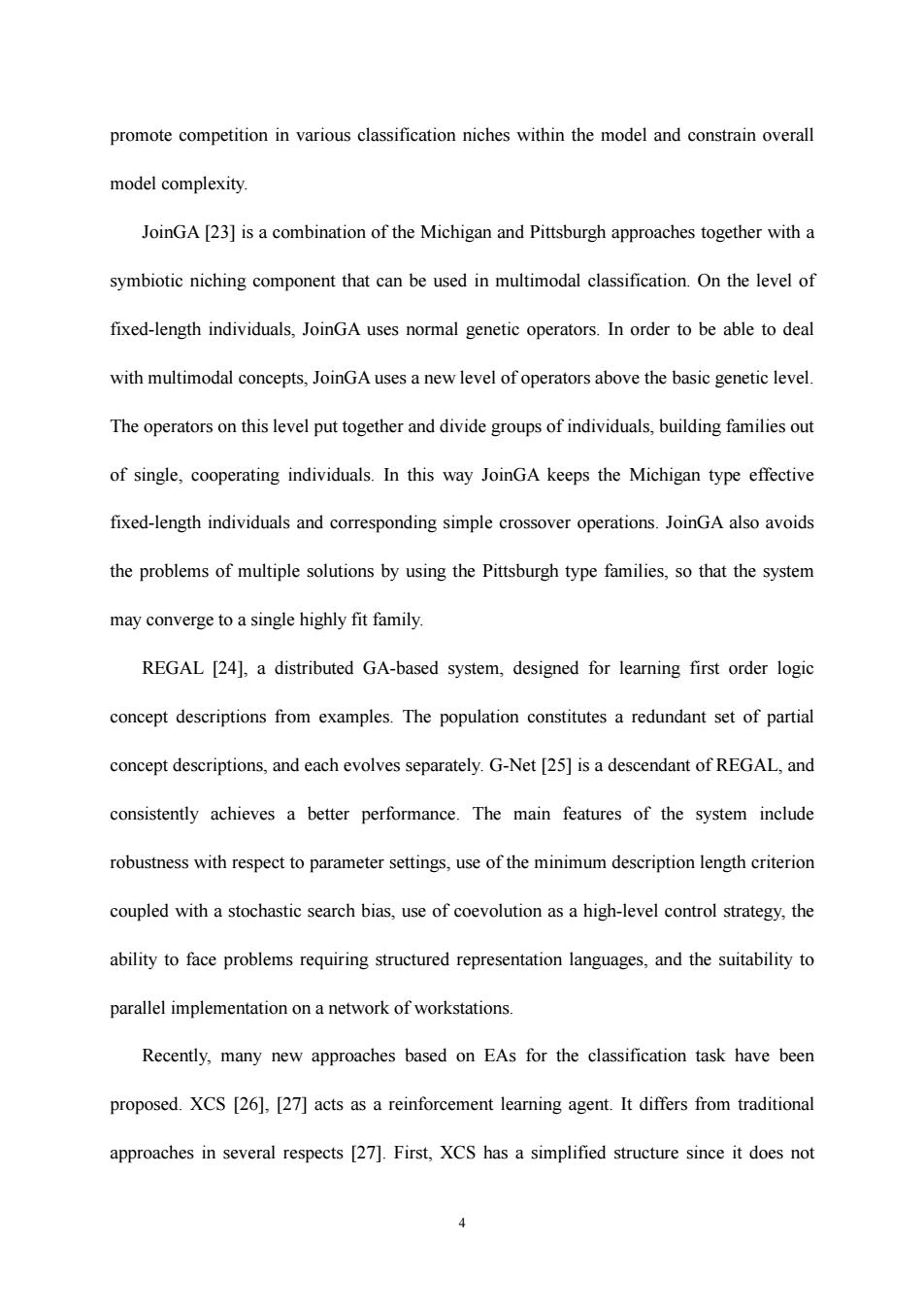正在加载图片...

promote competition in various classification niches within the model and constrain overall model complexity. JoinGA [23]is a combination of the Michigan and Pittsburgh approaches together with a symbiotic niching component that can be used in multimodal classification.On the level of fixed-length individuals,JoinGA uses normal genetic operators.In order to be able to deal with multimodal concepts,JoinGA uses a new level of operators above the basic genetic level. The operators on this level put together and divide groups of individuals,building families out of single,cooperating individuals.In this way JoinGA keeps the Michigan type effective fixed-length individuals and corresponding simple crossover operations.JoinGA also avoids the problems of multiple solutions by using the Pittsburgh type families,so that the system may converge to a single highly fit family. REGAL [24],a distributed GA-based system,designed for learning first order logic concept descriptions from examples.The population constitutes a redundant set of partial concept descriptions,and each evolves separately.G-Net [25]is a descendant of REGAL,and consistently achieves a better performance.The main features of the system include robustness with respect to parameter settings,use of the minimum description length criterion coupled with a stochastic search bias,use of coevolution as a high-level control strategy,the ability to face problems requiring structured representation languages,and the suitability to parallel implementation on a network of workstations. Recently,many new approaches based on EAs for the classification task have been proposed.XCS [26],[27]acts as a reinforcement learning agent.It differs from traditional approaches in several respects [27].First,XCS has a simplified structure since it does not4 promote competition in various classification niches within the model and constrain overall model complexity. JoinGA [23] is a combination of the Michigan and Pittsburgh approaches together with a symbiotic niching component that can be used in multimodal classification. On the level of fixed-length individuals, JoinGA uses normal genetic operators. In order to be able to deal with multimodal concepts, JoinGA uses a new level of operators above the basic genetic level. The operators on this level put together and divide groups of individuals, building families out of single, cooperating individuals. In this way JoinGA keeps the Michigan type effective fixed-length individuals and corresponding simple crossover operations. JoinGA also avoids the problems of multiple solutions by using the Pittsburgh type families, so that the system may converge to a single highly fit family. REGAL [24], a distributed GA-based system, designed for learning first order logic concept descriptions from examples. The population constitutes a redundant set of partial concept descriptions, and each evolves separately. G-Net [25] is a descendant of REGAL, and consistently achieves a better performance. The main features of the system include robustness with respect to parameter settings, use of the minimum description length criterion coupled with a stochastic search bias, use of coevolution as a high-level control strategy, the ability to face problems requiring structured representation languages, and the suitability to parallel implementation on a network of workstations. Recently, many new approaches based on EAs for the classification task have been proposed. XCS [26], [27] acts as a reinforcement learning agent. It differs from traditional approaches in several respects [27]. First, XCS has a simplified structure since it does not